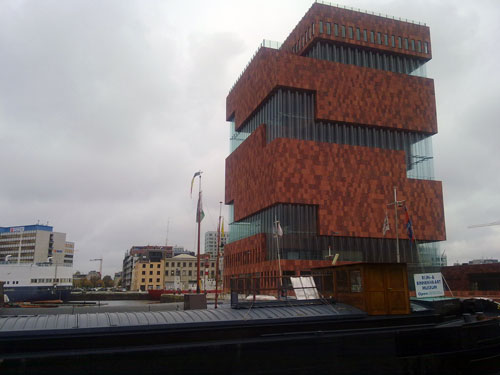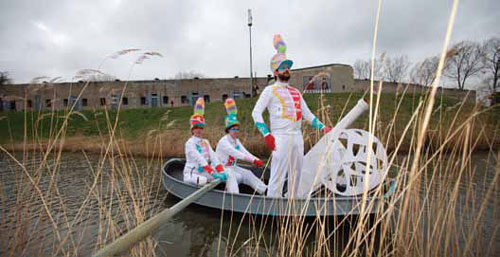Hip hop artist Dregs One discusses the gentrification process in his neighborhood in San Francisco:
Category Archives: Heritage
Helsinki industrial heritage
Helsinki has preserved many of its former industrial structures along the city´s waterfront. A nice concentration of these historic buildings can be found at the peninsula Katajanokka. Despite the inhospitable climate, the author went into town and photographed some examples.
Check out the building locations at Google Maps
Gräsviksgatan building

Katajanokka school building

Kino K13

Vanha Kauppahalli

Hietalahden Kauppahalli

OCAT Shenzhen
OCT Contemporary Art Terminal, OCAT in short, is based in an old industrial area in the Nanshan district in Shenzhen. Warehouses and factory buildings have been preserved to house creative companies, restaurants, galleries, bars and exhibition spaces, as well as a lecture room. Among others, the famous Chinese architecture firm Urbanus has an office here. The complex provides a pleasant small-scale oasis in the middle of new high-rise neigborhoods. The OCT (Overseas Chinese Town) is also well-known for it´s theme parks, such as ‘Window of the World’, ‘Splendid China’, and ‘Happy Valley’.





Read more:
OCAT
www.shenzhenbuzz.com/ocat
www.wikishenzhen.com/…
google maps
Eilandje (Antwerp)

Het Eilandje (The little Island), in the middle of a swampy tidal stream connected to the Schelde river, became part of the harbor of Antwerp in the golden age, when large numbers of cargo ships sailed into the city´s docks. When the port area consolidated later on, the island remained, between the Willems- and Bonaparte docks. It used to be a lively harbor quarter with the usual bars and nightlife.

By the 1980´s, Het Eilandje had become a rather abandoned and rundown neighborhood. The still populated sites in the area were indicated for urban renewal. State subsidies were considered to let inhabitants renovate their dwellings. However, this didn´t stop the decline of the neighborhood, which in the end attracted real estate developers and investors. Ground prices started rising and bit by bit gentrification took hold of Het Eilandje.
The municipality stimulated the redevelopment of the area by building the Museum Aan De Stroom (MAS), designed by Dutch architects Neutelings Riedijk, which opens in May 2011.


Read more:
www.eilandje.be
http://nl.wikipedia.org/wiki/Eilandje…
The seriousness of play
At the expert meeting ‘The Seriousness of Play’ the question was asked how art can be used to improve access of the population to cultural heritage. The meeting was meant to bridge the gap between artists, curators and heritage institutions such as museums. Merten Nefs was invited to shed light on the matter from the perspective of architecture and urban planning. A short number of inspiring examples were given of cooperation between a museum and an artist, for example at the Zuiderzeemuseum and Art Fortress Vijfhuizen in the Netherlands. However, this cooperation is rather an exception, not the rule.

As the border between art and the artist is quite subtle, some of the artists soon came to the conclusion that they weren´t eager to be used for anything by anyone, let alone to promote institutions, nations or cities. For example, in incubator areas throughout the world, young artists usually help to raise profits for the real estate industry. The benefits for the pioneers themselves are limited. The statement was made, that artists should actively propose interventions in a museum or other cultural heritage, instead of waiting for an invitation.
On the other hand, if the artist maintained a firm position in the process, instead of an ‘underdog’ position, both heritage institutions and artists would benefit. If the artists became more aware of their cultural and socio-economic role, perhaps they could negotiate better with institutions and investors to realize their personal artistic goals while at the same time performing a productive role in society. In this case, everyone uses everyone to achieve their objectives. But that’s a lot of if´s…
It was mentioned that one of the difficulties in practice is that an artist cannot guarantee the results of the artistic process beforehand, which makes it more complicated for companies and institutes to start a partnership. At the end of the evening, it was concluded that cooperation between heritage institutions and artists can be fruitful, but no one really knows what would be the best way to cooperate.
The Seriousness of Play was organized on September 10 2010, by Cultureel Erfgoed Noord-Holland, Kunst & Cultuur Noord-Holland, Saskia Monshouwer and Kunstfort bij Vijfhuizen.